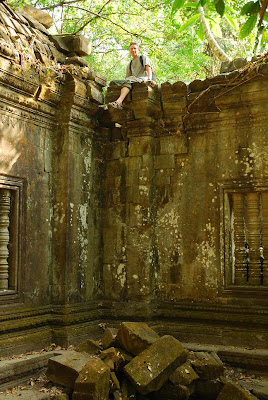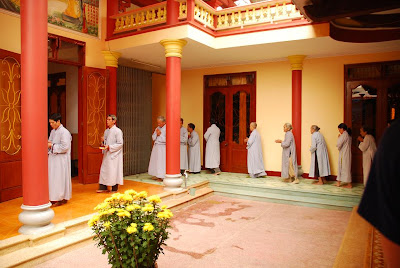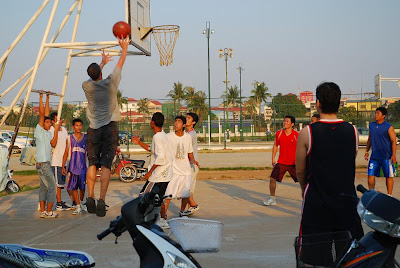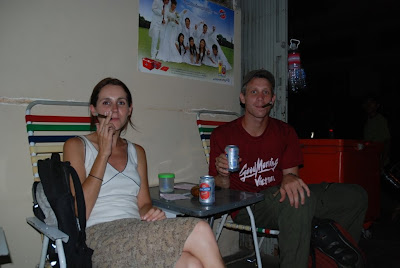We've traveled over 4 continents, 13 countries, 10 months, and 63 blog posts. It was a rewarding, life-changing experience. It couldn't have happened without the help of my parents, who took care of our three cats while we were away. We never would have left them unless we knew they were in good hands. Now, despite the hundreds of hairballs, litterbox misfires, and morning "pet me" requests, I hope "the gats", as they are known collectively, gave them some good memories. Thanks, mom and dad, for making it possible.
My wife introduced me to the blogging idea prior to the trip. It sounded like a fantastic idea but little did I realize the affect it would have on me. I rediscovered how much I enjoy writing, even as horribly unpracticed as I currently am. Fourteen years as an engineering student or professional had me focus on technical issues and mathematics; I eliminated creative writing from my life. The blog has revived that interest to create a story and hopefully, I can make the time to continue.
Regarding the blog, a special thanks to those that have read it, either in bulk or post-by-post. I tried to describe events and places to the best of my ability and with a bit of humor. A special thanks to those who left blog comments, especially Greg and my father, who commented on every post. Those words from home mean a lot when you're on the road for so long.
For the final post, I've compiled my 20 most memorable moments from our 10 month journey. It's 20 because I couldn't make it any shorter. This is the order that they came to mind.
Number 1, Meeting Bob and Debbie in the dishpit of Old Faithful Inn, Yellowstone National Park. Bob is a tatooed ex-Vietnam war green beret who hadn't filled out a W2 form the twenty years prior to Old Faithful Inn. Debbie, his girlfriend, was a toothless Oklahoman who has dared to join Bob on his crazy treks to the grizzly-filled Montana wilderness. Upon first glance, they wouldn't seem like the ideal couple for us to form a bond with. We did, however, form a special friendship that hopefully will continue to flower. There are few things more special than a potentially lifelong friendship.
Number 2, the 1-hour homestay with the Sabyinyo gorilla family. For one hour, we stood next to the 9-gorilla family in Virunga National Park as they foraged on eucalyptus trees. There was no cage, no fence, just the gorillas and us. From the spine tingling stare of Guhonda, the largest silverback in the park, to the playful energy of Big Ben, the troublesome youngster, to the distrustful mother of a week old baby, the peaceful family gave us the hour of a lifetime (even though it felt like less than ten minutes).
Number 3, Dala-dala accident near Arusha, Tanzania that left 25 dead. You gotta take the bad with the good. Rumors swirled that one of the dead was a victim of public justice. After the accident, the teenager entered the dala-dala where he "finished off" those that weren't already dead and subsequently stole jewelry, wallets, etc. He was caught in the act and as often happens in Tanzania's corrupt police society, the public acted as judge, jury, and executioner; they beat him to death. Nor more powerful image exists in my head than the initial sight of 25 uncovered bodies lying together lifeless. Crushed skulls, mangled legs, blood... You may see similar events in photos or on television but there is nothing like seeing it in person, the smells, lukewarm bodies, and grotesque body parts of death. Often, I wish that I stayed back like many others did that day, but if anything, it taught me how fragile life is.
Number 4, Watching a lioness tend to her rambunctious cubs during sunset in Serengeti National Park. If you haven't realized already, wildlife will be a strong theme in this list. Just as we arrived, the male cub began tormenting his sleeping mother by pawing and biting her tail. Eventually, he frustrated her enough that she woek to bathe him and his sister. Once bathed, the family crossed the rock outcropping to collect the final rays of sunshine before night began. Lit by the setting sun, we watched them play, rest, and just be cats atop their family mountain.
Number 5, Hopping the temple ruins of Beng Mealea. Angkor Wat is one of the seven manmade wonders of the world but it was Beng Mealea that captured our hearts. The temple ruins are rarely visited and completely free to exploration at your own risk. This is the closest I'll get to Spanish conquistadors discovering Mayan, Incan, or Aztec ruins, French explorers discovering Angkor monuments, or everybody's favorite tomb raider, Indiana Jones. Exploring hallways closed off by rubble, climbing atop high walls to orientate, and swinging across a vine to cross fallen stone were unforgetable.
Number 6, Two days off the beaten tourist trail in Vietnam. From Buddha worship to maniac bus drivers to getting whacked in the back of the head, these days were a constant adrenaline rush from start to finish. No consecutive days on the trip compare.
Number 7, Training at Lanna Muay Thai. I've dreamed of dedicating myself to a sport for six month to a year. How good could I get? Where would it lead? To get just a taste, I spent a week training at Lanna Muay Thai in Chiang Mai, Thailand. The training sessions were tough and those club members that were serious were incredible athletes. I was bruised and battered when my week ended, but I learned a ton and walked away proud of my little progress.
Number 8, Seeing my wife's motherly instincts shine at Nkoaranga orphanage. Laura generally doesn't warm up to children quickly and sometimes I've wondered if she likes them at all. When she started telling stories about Housseini every evening at the volunteer house, it was obvious the child had touched her heart. She had taken him to his first physical therapy sessions to learn how to walk and was working with him daily to improve. By the time I visited the orphanage with her, he was taking two or three steps before getting caught by Laura. I played with 10+ kids aged 1-5 as Laura whipped through dirty diaper after dirty diaper, helped feed the kids, and arbitrated toy fight after toy fight. In the end, though, it was Housseini who got the most attention; his affection for Laura was so great, he would attack her with hugs when she arrived and shed tears when she left. Hopefully, the abandoment of volunteer after volunteer hasn't affected Housseini's incredibly exuberant attitude. The latest rumors were he was to be adopted by an American family, something that is rare for the Tanzanian government to allow.
Number 9, The Murchison Falls boat ride. Our travels have included quite a few boat rides, expecially on the Mekong, but none come close to rivaling the boat ride on the Nile river put together by the Red Chili Hideaway of Kampala, Uganda. The Murchison Falls trip includes an afternoon boating upriver to the falls. The falls, however, are not the highlight. Hippos, crocs, water buffalo, and deer can be seen along the riverbanks for as far as the eye can see. Kingfishers dive into the water. Egrets walk in shallow water. Snake birds slither on the water surface. Fish eagles perch on riverbank trees examining the flowing river. The boat engine is constantly spooking hippos in and out of the water. Their short legs and overweight body hustle along the riverbank splashing everything nearby to escape the spooky boat, quite a sight. This was an amazing view into Nile wildlife.
Number 10, Dragging a deer from the Irasburg, Vermont woods with Mom, Dad, Laura, and Dick, my parents' neighbor. It was 25 years since my father had shot a deer. Despite having to work on opening day of Vermont deer season, he set the alarm early and headed out solo into the Irasburg woods. The result was an early morning call to my mother... he'd got one! We dragged the heavy 2-year old out after looking for it for over a half hour. Hopefully, I'll get a taste of the venison soon. At least for a couple years, he won't have to hear anymore "white tail" jokes.
Number 11, Eating from fisherman stalls at the Forodhani Gardens. In Stone Town, Zanzibar, the Forodhani Gardens is an evening market where local fishermen set up stalls to barbeque the day's catches. Fresh seafood thrown on to a kebab, salted, and grilled to perfection. Add the other locals who make french fries, Zanzibari pizza, and grilled beef and it's hard to select dinner. Bring an empty stomach and enjoy what may be the best evening food market in the world. Don't forget to try the sugarcane-lime juice.
Number 12, Watching a mama grizzly bear forage with her three 1-year old cubs in Yellowstone National Park. It was our last day in Yellowstone N.P.; we were beginning our long drive to Vermont. After stops to watch roadblocking buffalo, a hunting coyote, and two perched bald eagles, we pulled off the road where a man was looking down into a valley. There, a grizzly sow and her three cubs foraged and frolicked in the field for about 30 minutes. We couldn't have scripted a grander sendoff.
Number 13, Swinging buzzed on Beer Lao in Vang Vieng. Nothing can make you feel more like a kid again than tubing down a river in the shadow of limestone cliffs. Add to it the James Bond swings and unlimited Beer Lao, and it makes for a memorable experience.
Number 14, Bathing with an elephant in Pai, Thailand. We were skeptical about the truth in advertising of "bathe" with an elephant. The photos from Thom's Pai Elephant Camp looked more like ride an elephant through a river. To our surprise, Phanom sprayed us from his trunk and tossed us off his back to the riverbed. We kept hopping on for more from the gentle giant.
Number 15, The food of Southeast Asia. Is there any question that this wasn't a highlight? After blog posts about the food of Thailand, Laos, Cambodia, and Vietnam plus Lonely Planet Cambodia's Top 5 WE DARE YOU and the fruits of the equator, it's obvious where my daily thoughts were. From fried noodle to pho to deep-fried spiders, there's something for everyone. Wonder where I can get one last dish of fried noodle?
Number 16, The Austrian adventure with my parents and mother's family. With everyone living around the world, it's difficult to bring everybody together. My mom and her siblings organized a 5-day jaunt through Austria and Southern Germany. It wasn't so much about the sites but more about being together for an adventure. Throw in some Bavarian castles, Mozart, and wiener schnitzel with hefewiezen and how can it not be a great time?
Number 17, Hooping with the locals. Ruhengheri, Rwanda was the first time I joined pickup basketball at the local sports park. That drew the largest crowd of all to see the mzungu basketball player. I followed that up by getting regualar 6 pm games in Tengeru, Tanzania while I volunteered. By the time I left, they had more than 15 regulars showing up daily. Basketball was harder to find in Asia. I got a few games in Hue, Vietnam at a seminary. In Phnom Penh, daily games were play at Olympic stadium. Sports is a wonderful way to bond with locals; it bridges the gaps of language, culture, and stereotypes. Everyone starts equal on the basketball court.
Number 18, Storm in Sant Fost, Spain. Sant Fost is the small town outside Barcelona where my inlaws live. Some of the summer thunderstorms there are incredible and last summer, during our two week there, one of the most amazing storms hit the town. Water flooded the streets. Wind blew pots off balconies. It rained so hard, the drops were bouncing off the pavement. The family gathered on the second story balcony for about an hour as the storm cooled Sant Fost.
Number 19, Motorbike cruising in Southeast Asia. We cruised the quiet country roads around Pai, Thailand. We visited remote waterfalls and coffee plantations of the Bolaven plateau in Laos. We road to Skuon, Cambodia's market to taste deep-fried spiders. Then, we finally flipped our rented motorbike in Dalat, Vietnam. It's been a ton of nerve-racking fun cruising Southeast Asia with our own 2-wheeled transportation; I wish we had done it more.
Number 20, Bailey's stand against leaving again. Last but not least... we have three cats that went through a traumatic move to Vermont. Upon arrival in Vermont, we abandoned them for Africa and Europe only to return 9 weeks later. They still treated us with the love they had always given, and we did all we could to make up for lost time. Then, as suitcases lied on the floor packed once again for Asia, Bailey, the siamese of the group, crawled atop my chest while I read a book. He proceeded to get comfortable and then looked me in the eye. After giving me a good looking over, he slept there for a good two hours. I took this as his way of saying "Don't go, daddy." I won't forget the moment for the rest of my life. The power of a pet's love...
Now, a break from the travel blog to smoke a victory cigar!


































































